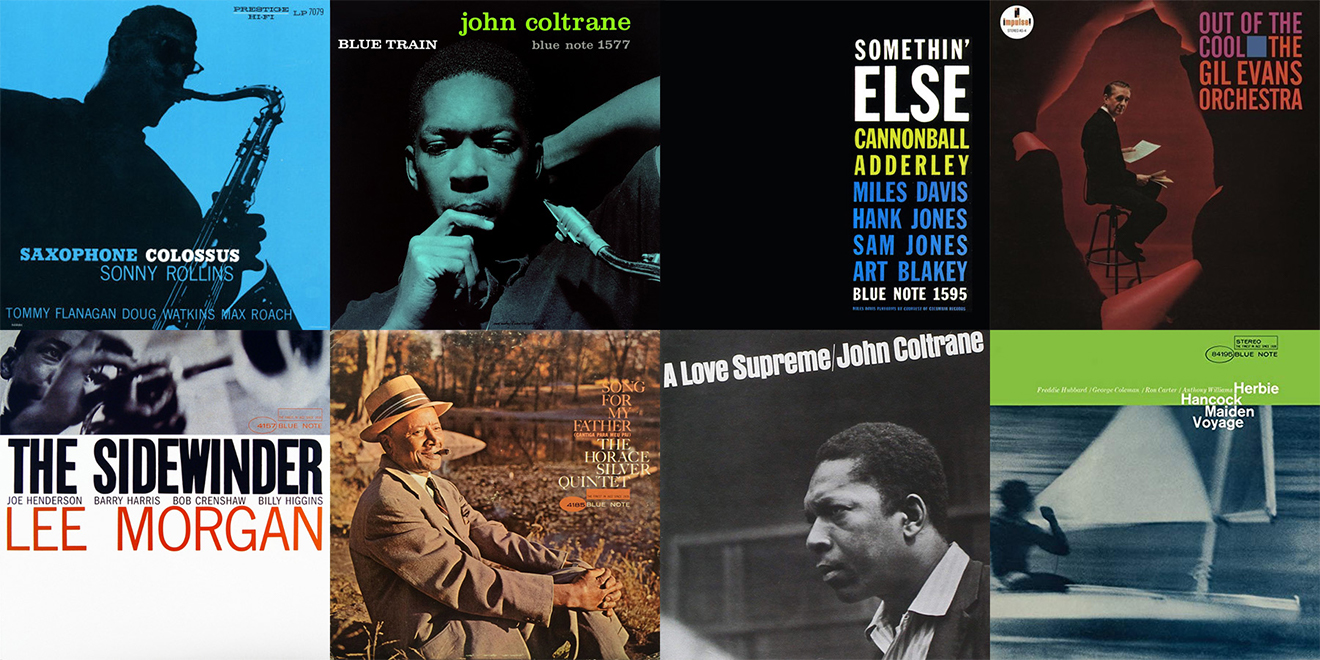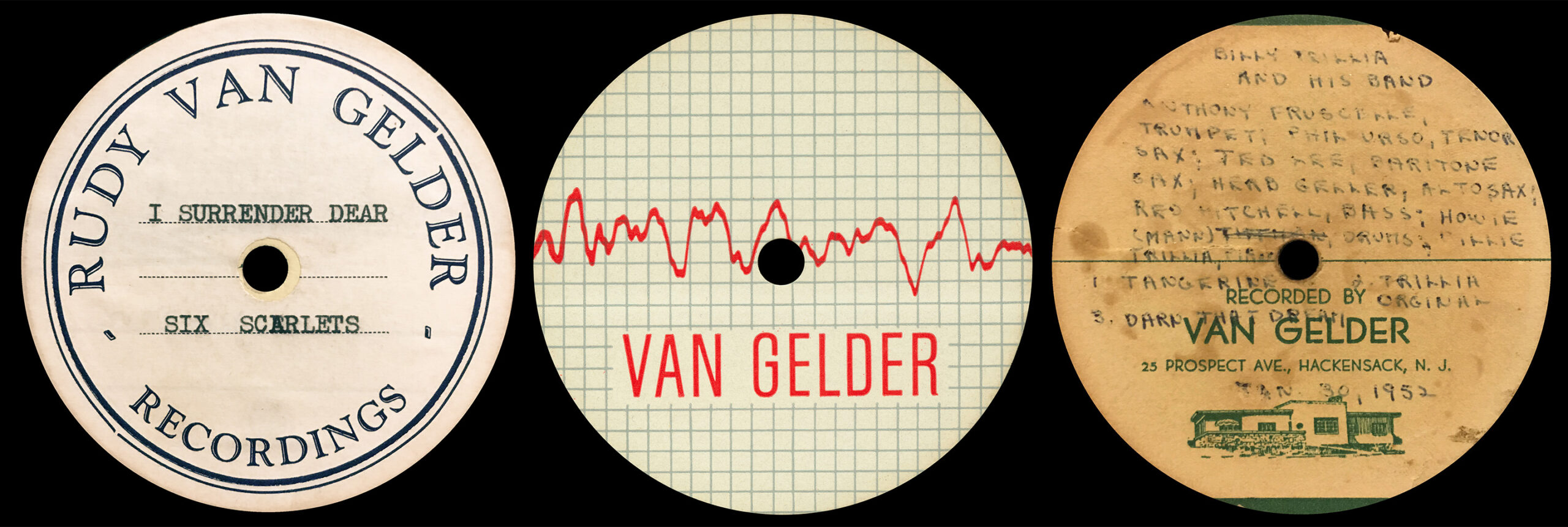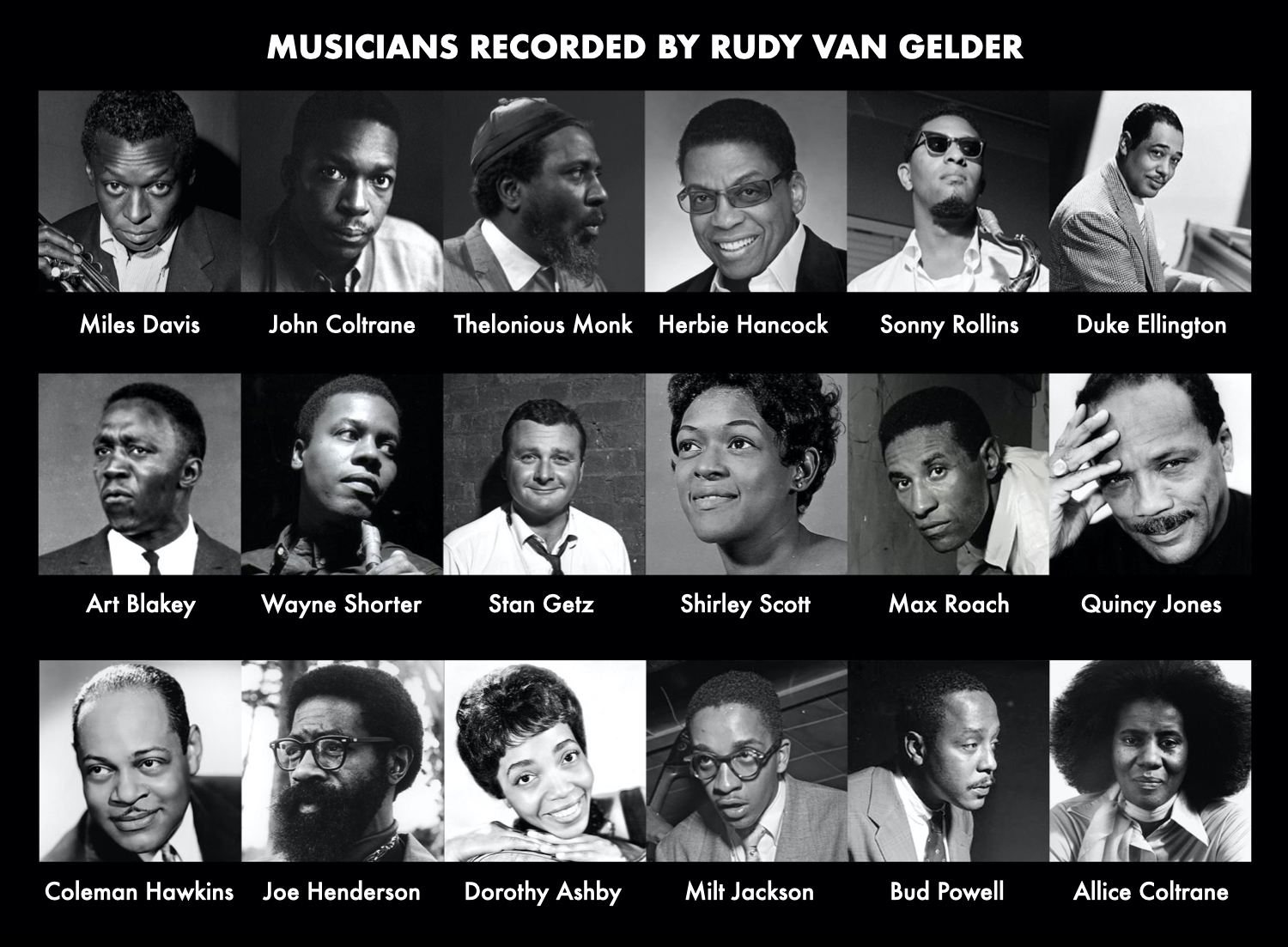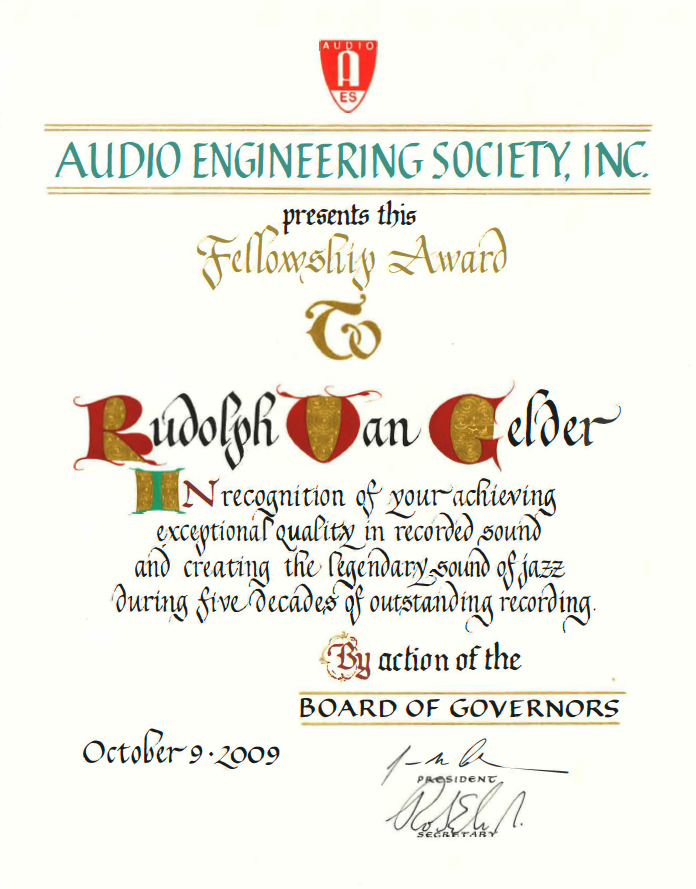| < Back | Table of Contents | Background | Next > |
| Table of Contents < Back |
Background Next > |
If you’re a fan of jazz, chances are you’ve heard the name “Rudy Van Gelder”. You’ve probably seen it in the liner notes of many of your favorite albums. You may even own some CDs displaying the initials “RVG” on the packaging. And if you’re a collector of vinyl LPs, you know to look for “the Van Gelder stamp” in the runout area of a record as a seal of quality. In fact, one might argue that it’s impossible to avoid Rudy Van Gelder’s name if you have even a casual interest in jazz.
For those who aren’t entirely clear on how he is connected to these jazz albums, Rudy Van Gelder was the either the recording engineer or mastering engineer. Usually, he was both. He is associated with far more classic jazz albums than any other recording engineer, and there are a few reasons for that.
First, he had a talent for what he did, and what he did was unique in many ways. He possessed the rare ability to singlehandedly command a private recording studio all while managing the multiple personalities and expectations of the musicians and producers involved in the recording sessions.
Second, he was an astute businessman with an innate talent for marketing himself. From early in his career, he created custom labels with his name on them for his clients, and when he began working for established record labels they would always credit him on the album packaging. As a mastering engineer, he was in the habit of etching his initials “RVG” into the lacquer disks used to make the vinyl records bought in stores.
Finally, through his working relationship with important jazz record labels, he dedicated his life to recording the world’s greatest jazz musicians. As a result, the volume of his output was superhuman. His engineering credits span six decades and their tally reaches well into the thousands.
Rudy Van Gelder’s life work has also been recognized as essential to the historical development of both jazz and audio engineering by organizations like the National Endowment of the Arts, the Recording Academy, and the Audio Engineering Society.
But his life story has the power to speak to people from all walks of life. It is the story of an optometrist who possessed the will and determination to make his work into something that was not only creatively fulfilling but also proved profoundly important to the task of preserving America’s musical heritage.
| < Back | Table of Contents | Background | Next > |
| Table of Contents < Back |
Background Next > |



